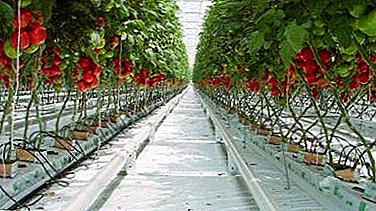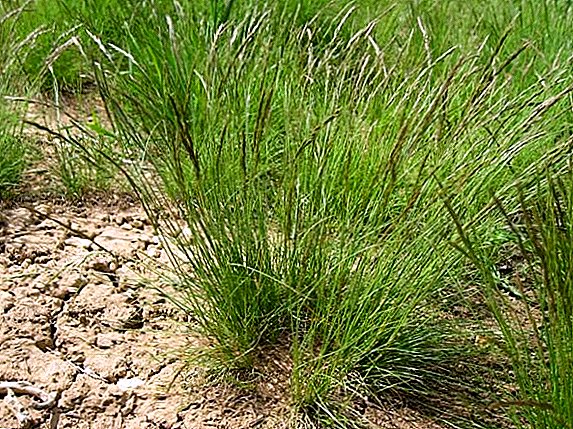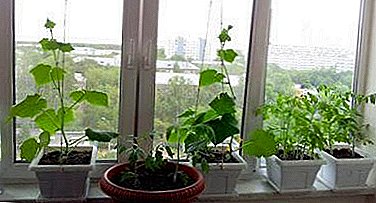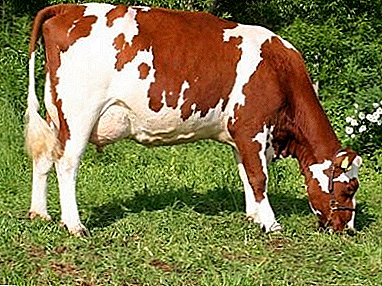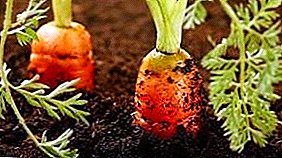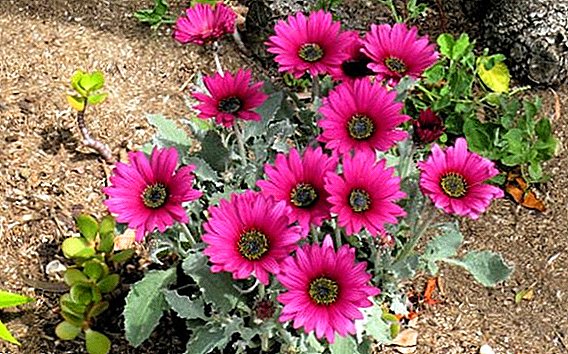 Arktotis "came" to us from South Africa.
Arktotis "came" to us from South Africa.
This beautiful flower has many species, many of which have long taken root in our area, because in fact it is not difficult to grow arktotis on your site.
Botanical description
These are annual, biennial, and perennial herbaceous or subshrub plants. The leaves at arktotisa opposite or successive. Inflorescence in the form of a basket. The color of flowers is very diverse: they can be white, pink, scarlet, yellow, orange.  The fruit is a grayish-brown achene, which contains many small seeds.
The fruit is a grayish-brown achene, which contains many small seeds.
Herbaceous plants also include forget-me-not forest, centaury, broadleaf bell, bidens, alpine aster, romance crocus, tricolor violet.Inexperienced gardeners can confuse arktotis with gerberas, as they are really similar.
Did you know? The Latin name of the flower "arctōtis" comes from the Greek "arktos" - "bear" and "otos" - "ear". That is, the literal translation - "bear's ear." The name of the flower was due to its pubescent fleshy leaves and stems.
Kinds
Today there are about 30 species of arktotis.
But in our gardens, the most common are six:
- acaulescent - this is a miniature look. His outlet is thick. Peduncles - 20 cm in height; inflorescences - orange, red;

- short stem - no more than 15 cm. It has practically no stems, it looks like compact bushes with foliage. Flowers are small yellow, orange-yellow;

- rough - in the wild, it can grow up to 1 m, but in areas of not more than 0.5 m. White or yellow inflorescences of medium size;

- lush arctotis - Medium size, with bright orange or bright yellow flowers. It is the ancestor of many modern hybrids;

- stekhasolistny most common in gardens. Stems - up to 1 m, leaves - large. Hybrids come in a variety of shades;

- hybrid - has flowers of various shades: from white to bronze. Height ranges from 20 to 120 cm. It is not recommended to use seeds of this species.

Growing from seed
The flower propagates with the help of seeds, which are desirable to first germinate.
Seedling
The procedure is carried out at the end of March. Seeds are bought or collected from a flowering plant. Take small and shallow boxes, and filling them with soil, scatter the seeds on the surface of the soil. The first shoots appear after 8-10 days. They will need a little thin. Water moderately.
As soon as full-fledged leaves appear, seedlings should be transplanted into separate pots or 2-3 pieces in one pot.
Important! Extreme care must be taken when transplanting, since arktotis has very delicate roots.
 True, the transplant can not be done if you immediately plant the seeds in peat tablets. When the seedlings reach about 10 centimeters in height, they are pinched to increase bushiness. Transplanted seedlings into open ground around the end of May.
True, the transplant can not be done if you immediately plant the seeds in peat tablets. When the seedlings reach about 10 centimeters in height, they are pinched to increase bushiness. Transplanted seedlings into open ground around the end of May.Location
For this flower it is better to choose a heated greenhouse. Also do not forget that he needs a lot of light. If there are no greenhouses, the boxes can be kept in the house, having covered them with transparent glass or plastic film and put them in a warm place.
Important! Plant the plant immediately in open ground can only be in the southern latitudes. This is done in May in the previously prepared shallow pits - 4-5 pieces each, leaving between 20-40 cm between them (for tall species, more space should be allocated).
The soil
The ground arktotis not very demanding. He will fit any, except for excessively heavy and those that badly let in moisture. These flowers grow beautifully in the drained limestone soil, which will be necessary from time to time to loosen and remove weeds from it. 
Plant Care
Special care arktotis does not require that can not but rejoice, because you get a garden decoration with a minimum of time.
Temperature
Arktotis loves heat very much, in the room it grows well at a temperature of somewhere + 22 ... +24 ° С.
Flowers like daisies, alstroemeria, babian, crossander, miltonia, nasturtium, clematis, gladiolus also warmly love.
Watering
The flower needs moderate watering. Do not water it very often and a lot. This can destroy it, as root rot will occur.
Humidity
He also does not tolerate excessive soil moisture. For him, even preferable to drought than dampness. This is due to the fact that in its homeland the flower usually grows in stony ground and in arid conditions.  He is able to draw moisture even from the very depths of the ground, and all thanks to its long roots.
He is able to draw moisture even from the very depths of the ground, and all thanks to its long roots.
Top dressing
Before flowering, it is advised to feed the plant with a solution of mineral fertilizers. Organic fertilizers can harm.
Mineral fertilizers include Plantafol, Azofoska, Sudarushka, Kristalon, Ammophos, Kemira.
Bloom
Flowering begins 2-3 months after sowing. Faded baskets of peduncles need to be cleaned on time, this helps to preserve more nutrients for live flowers and will continue the flowering period itself.
Seed collection
Achenes appear 2 weeks after the wilting of the flower. This is a signal to collect seeds. 
Did you know? Peter I paid close attention to the cultivation of flowers: during his reign, the Garden office was established, which ordered rare flowers and garden decorations in other countries.
It is necessary to be engaged in collecting in the morning, and in dry weather. Peel the seeds and dry them thoroughly. Store them in fabric bags or in a glass closed container in a dry, dark, cool place.
Difficulty growing
There are no particular difficulties regarding the cultivation of arktotis. The main thing is to remember that excessive watering is absolutely contraindicated for him. Because of it, problems are possible - root rot, and as a result - the death of the flower.
Also tall plants need a vertical support, which is true for other flowers and garden crops. 
Diseases and pests
The flower is quite resistant to diseases, but still there are pests that are terrible arktotisu:
- aphid. To know this insect is elementary, because it can be seen. In addition, its presence causes the deformation of the tops of the shoots, twisted leaves and pad - sweet discharge on the foliage. By the way, a black fungus soon settles on them. Insecticides need to be combated with tla: "Inta-Vir", "Bi-58", "Neoron", "Accord", "Imidor", "Tabazol", "Fatrin", "Tsunami", "Sharpay". Before use, it is advised to rinse the bush with water from a hose.
- meadow (forest) bug. It is also easy to recognize this insect, because it has a characteristic flat body with a color ranging from dirty green to brown. It will help spraying a solution of water based on mustard (100 g per 10 l).
In both cases, you can also use onion infusion:
- onion peel - 200 g;
- water - 10 l.
Pour the husks with warm water. Let it stand for 4-5 days. Strain. Spray the plants every 5 days, but no more than three times.
As you can see, arktotis not very fastidious plant. So he will not give you much trouble. But aesthetic enjoyment of its appearance - for sure! So, if you are still in thought, throw them aside - after planting this flower, you will definitely not regret it in the future.
Feedback from network users
I planted under the greenhouse at the end of April. But it is better to seedlings, but it does not have time to bloom properly before the cold. Although now the seedlings are too late. The land is ordinary garden with the addition of sand. Sun-loving. In bad weather, the flowers close, but they are spectacular when closed. My arktotis was up to 40 cm high. It is better to plant in groups of 5-6 pieces surrounded by low-growing flowers of the mezimbrytemm type.Ira
//flowersweb.info/forum/messages/forum3/topic88882/message2095892/#message2095892



